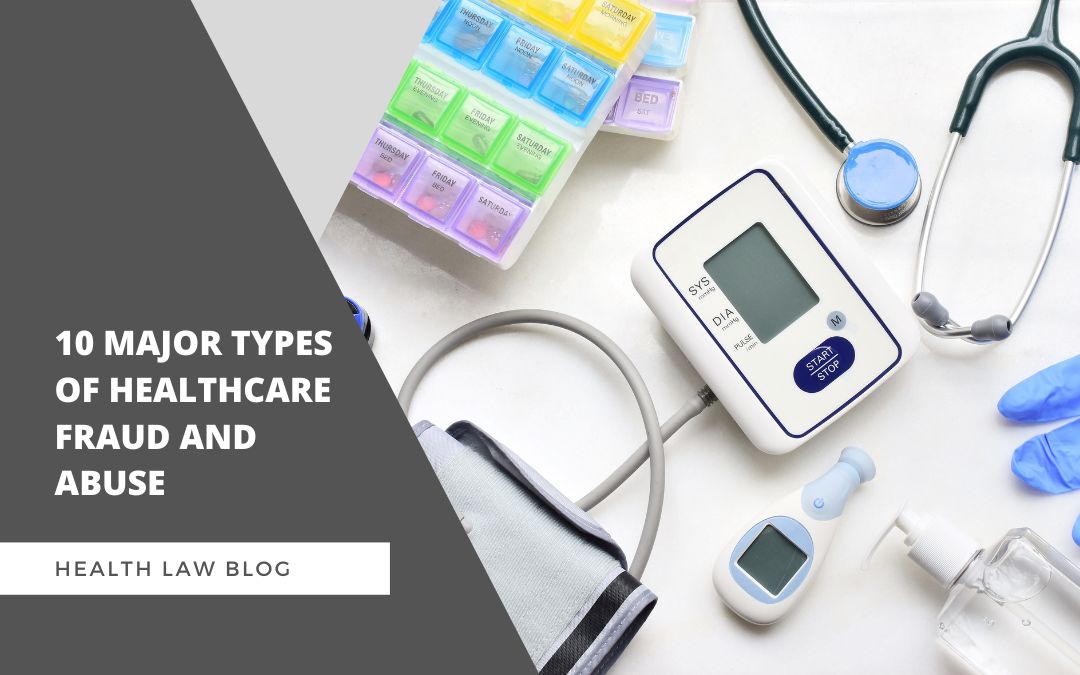There are many types of healthcare fraud and abuse, including false billing and insurance claims, fake advertisement and promises, kickbacks, and more.
Here are some of the most common examples of healthcare abuse and fraud committed by providers, institutions, and patients.
1. Providing medically unnecessary procedures or treatments
Providers will order tests or treatments that the patient doesn’t need solely to generate insurance payments. The patient may not even be aware that the procedure isn’t needed.
2. Upcoding
Upcoding occurs when a provider falsely bills for a higher-priced treatment than what the patient actually received. As a result, the patient’s insurance is charged for a more expensive service than was provided. Additionally, patients can end up having diagnostic codes in their chart that indicate a more serious condition than what they actually have but were given to justify the false treatment code. This can lead to confusion about their care moving forward when seen by other providers.
3. Intentionally misdiagnosing a patient to bill for more expensive treatments
In this case, the provider deliberately misdiagnoses a patient to justify providing more expensive treatments and procedures. This act can lead patients to receive care they don’t need and cause their medical records to falsely indicate illnesses or conditions they don’t have, leading to confusion when seen by other providers.
4. Intentionally misrepresenting non-covered treatments as medically necessary treatments covered by insurance
In this case, a provider misrepresents a condition or treatment so they can bill it as a covered treatment under insurance. A common example is cosmetic-surgery schemes where a non-covered cosmetic procedure like a cosmetic nose job is billed as a necessary condition like repairing a deviated septum.
5. Kickbacks
Kickbacks can happen when providers refer patients to each other in exchange for gifts or money. This practice can result in patients being referred for care they don’t need or not being referred for the right kind of care.
6. Billing for services that weren’t provided
Sometimes people can be billed for healthcare visits, treatments, or other services that they never received, called phantom billing. This often happens in cases of identity theft or when medical records are stolen by criminals. The stolen patient information is then used to bill insurance for services, supplies, or visits that didn’t happen.
7. Unbundling
Unbundling occurs when providers intentionally bill separately for each item that was actually part of one procedure. They do this to deliberately inflate the cost of the procedure.
8. Medical identity theft or swapping by patients or other people (not providers)
This happens when a person or criminal steals someone’s health insurance information or identity. The stolen information may be used to bill for treatments not received, used by someone who isn’t that person to receive treatments, or be enrolled in fake benefit plans.
9. Double billing
Billing mistakes can happen. But double billing occurs when a person intentionally submits multiple claims for the same service in hopes of being paid more than once for the same service.
10. Prescription fraud
Prescription medication is necessary, but when misused or abused can lead to significant problems, including addiction or death. Unfortunately, there are several types of prescription fraud, including:
- Doctor shopping, where patients intentionally visit multiple practitioners trying to get prescriptions for controlled substances
- Patients selling prescription medication illegally
- Forging prescriptions
- Falsely providing prescription drugs

